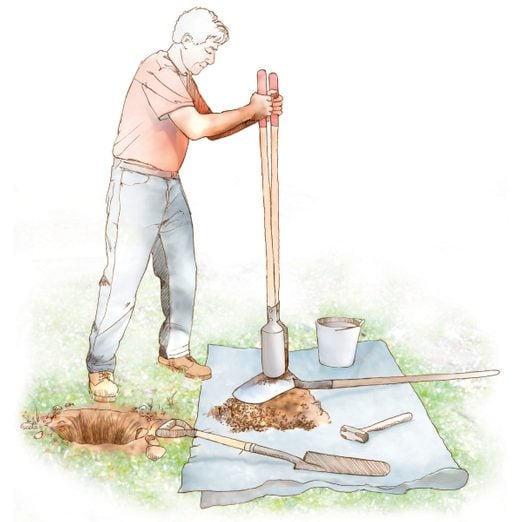How To Dig a Fence Post Hole the Right Way
Updated: Apr. 18, 2024
The easiest and most accurate way to dig postholes.
Introduction
Dig postholes faster and easier and position them more accurately using this step-by-step guide. It includes many labor-saving tips.Tools Required
- Hammer
- Level
- Marker
- Posthole digger
- Reciprocating saw
- Tape measure
- Tile spade
Materials Required
- Plastic tarp
- Small nails
- Wooden stakes
So, you think you know how to dig postholes, eh? Sure you do—anyone can dig a hole. But how hard do you want to work, and how often do the holes end up in the wrong spot and you have to start over? If you dig post holes the right way, it’ll save you time and effort in the end.
Posthole digging tools
If you have more than a couple of postholes to dig, don’t stop at a shovel and a clamshell digger. You’ll treasure two more tools just as much. Pick up a tile spade. The long, narrow blade will get you places no other shovel can. Also, get a tamper-end digging bar which will help you get dig out rocks and compact the soil in the bottom of your post hole.
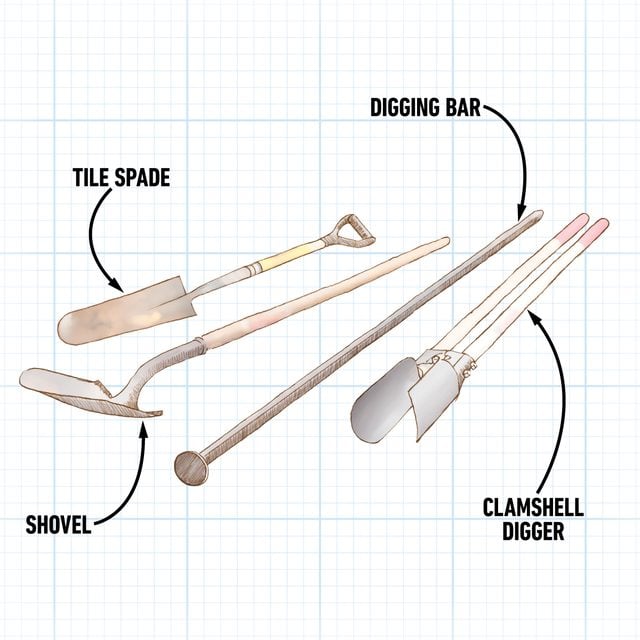
Project step-by-step (8)
String your line and pound the stakes
- String a line marking the outside edges of the posts.
- Mark the post centers on the line by untwisting the string and pushing a nail through the strands.
- You can fine-tune the nail position just by sliding it to the exact location.
- Then pound stakes to mark the center of the holes. If you’re using 4×4 posts, that will be just under 2 in. from the string.
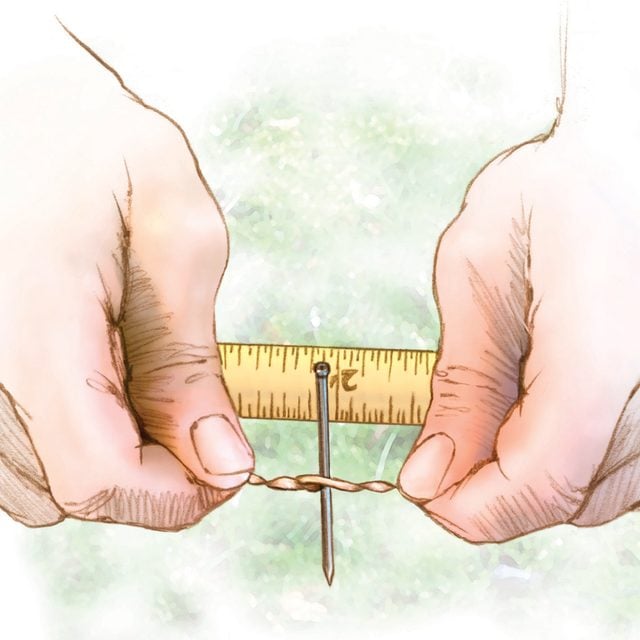
Carve out a soil divot with a spade
- Set the string aside so you don’t wreck it while digging.
- Before you start digging, make a pilot hole first. Carve out a round plug to outline the posthole. That’ll get you started in exactly the right spot.
- Dig around the stake to center the hole.
- Unless you have very soft soil, you’ll work way too hard digging with just a clamshell digger. Loosen the soil and carve away at the sides with the tile spade. It’ll easily slice through small roots.
- Throw the dirt onto a tarp to protect your lawn.
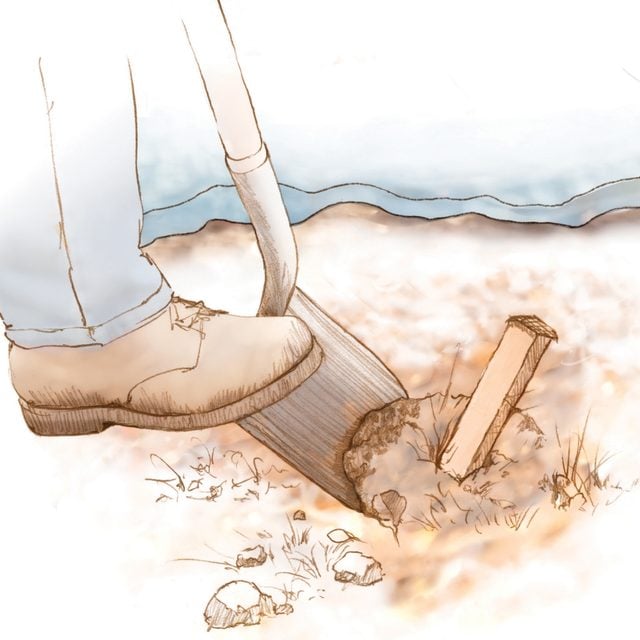
Use your post hole digger
- To use a post hole digger: Plunge the open digger blades into the loosened soil and grab a load of fill. Remove the dirt with the blades closed, and put it on your tarp where you’re collecting the dirt.
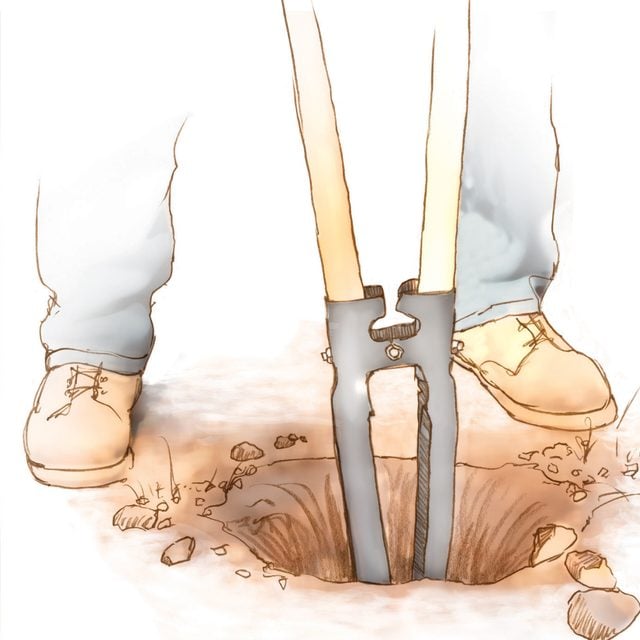
Cut large roots with a reciprocating saw
- Don’t wear yourself out chiseling roots. Just use a sawzall with a long, coarse blade and poke it right into the soil at the ends of the root and cut it off.
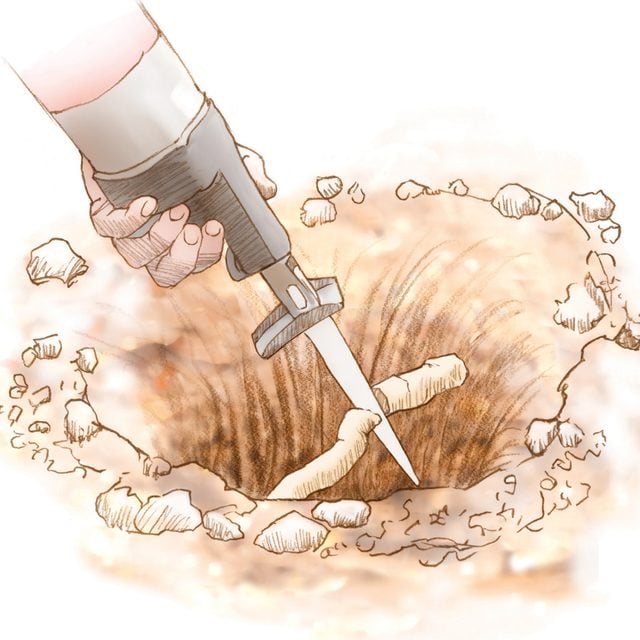
Dislodge rocks with a digging bar
- Pick out rocks from the hole sides with your digging bar. Let them fall into the hole and pluck them out with your clamshell digger.
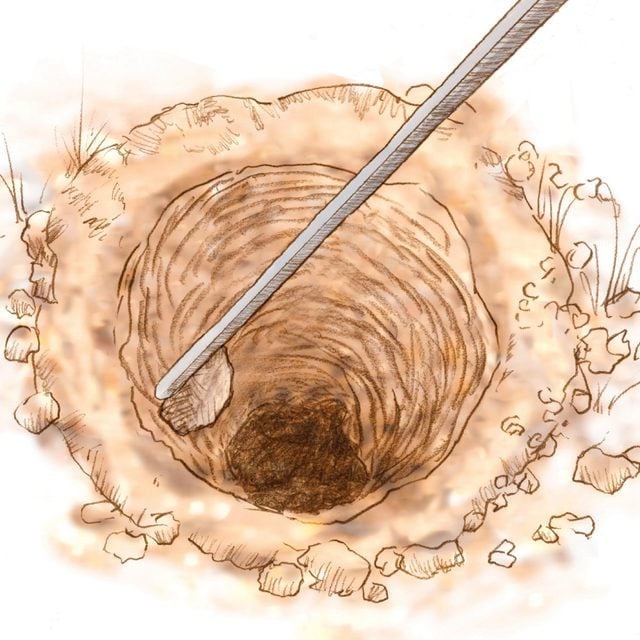
Tamp the soil with the other end
- Use the tamper end of the digging bar to compact the soil before setting posts or pouring concrete. That prevents any settling.
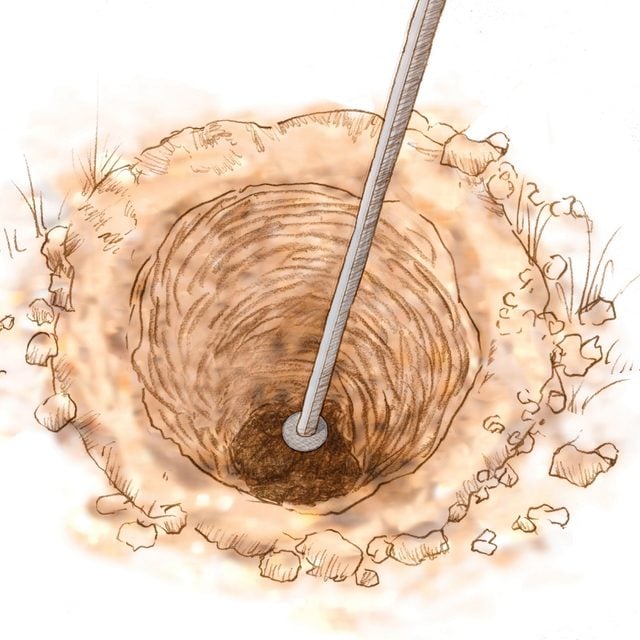
Mark the post edge locations
- Restring the line, pull the nails and mark the exact post edge locations on the line with a permanent marker.
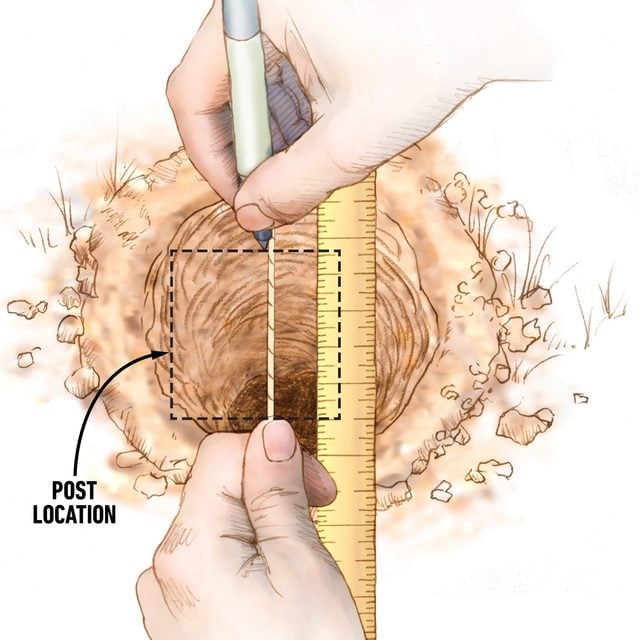
Set the fence posts
- Position and plumb the posts carefully before backfilling or adding concrete.
- Place the posts with one side brushing against the string and the edge even with your mark.
- Hold the post plumb while you fill the hole.
- Pack the soil with the tamper end of the digging bar every foot or so.
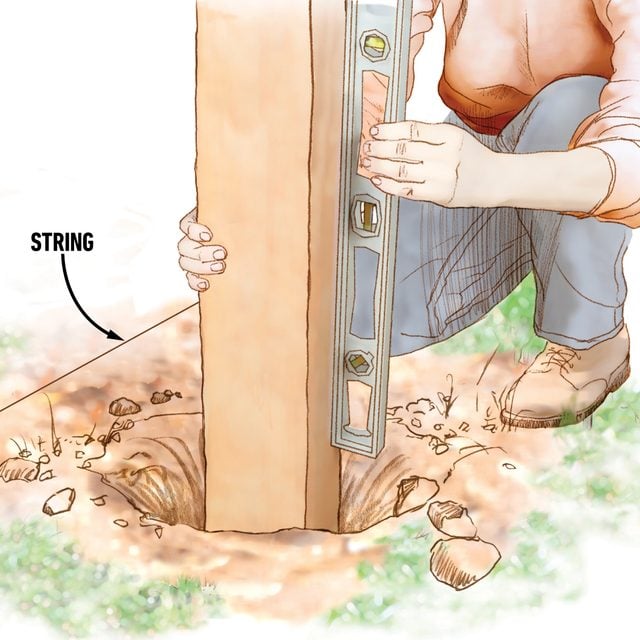
Tips for digging fence post holes
- Lubricate your shovel with water. If you’re digging in sticky clay soil, dip your clamshell digger in a bucket of water so the soil won’t stick. Knock off clumps on the back of the shovel. Spread a tarp to keep dirt off your grass.
- Use a small post hole digger. Unless you’re a body builder, avoid those giant, heavy-gauge, fiberglass-handled clamshell diggers. You’ll just get exhausted; you’re better off with a smaller, lightweight digger.
- Cover holes with plywood. If you’re walking away from the postholes for a while, cover them with plywood. It just might save a broken leg and/or keep the sides from caving in during a storm.
When should you use a power auger for digging fence posts?
Power augers can speed up digging in rock- and root-free soils. However, they do require a trip to the rental store and a brawny friend. Also, they’re not very good in clay or rocky soil. Unless you have lots of holes to dig in sand, it’s often easier to dig by hand.

